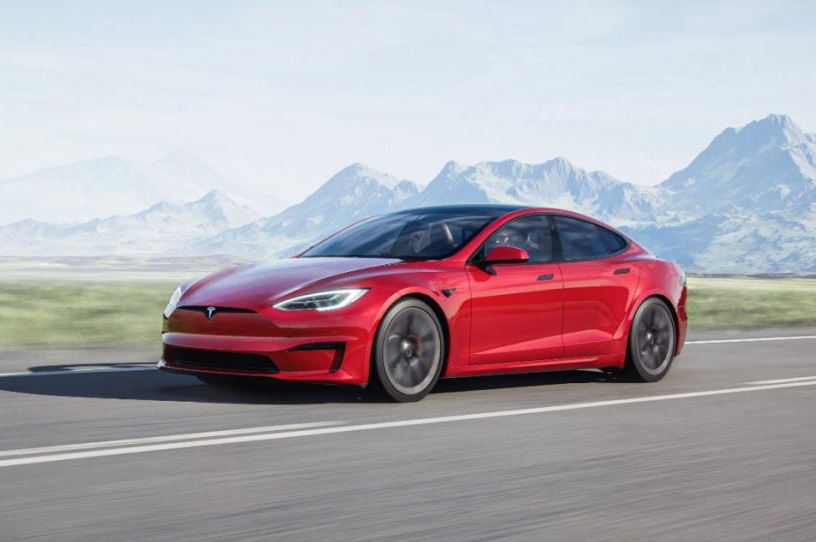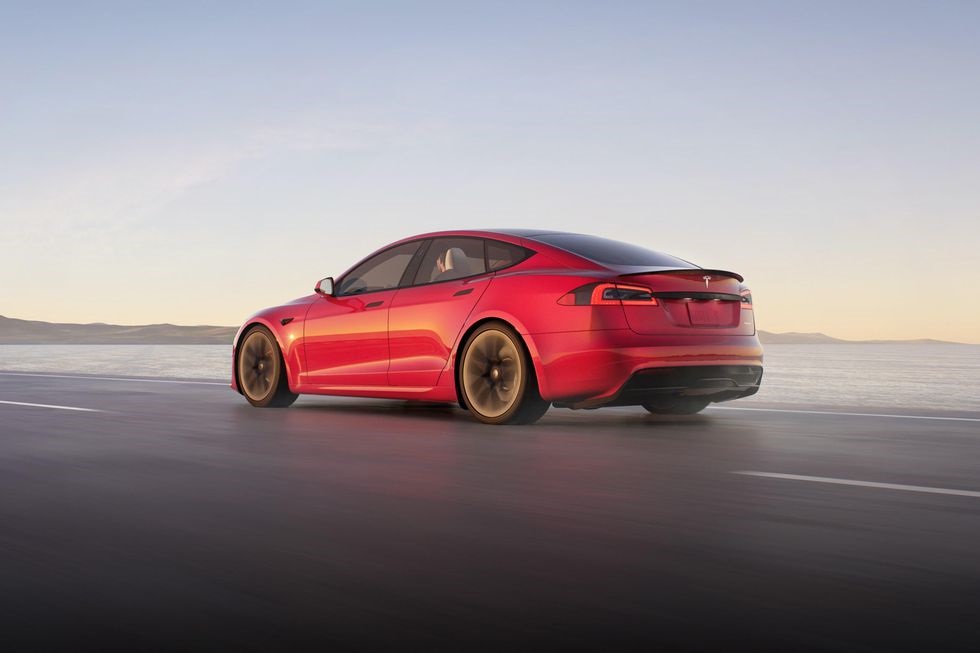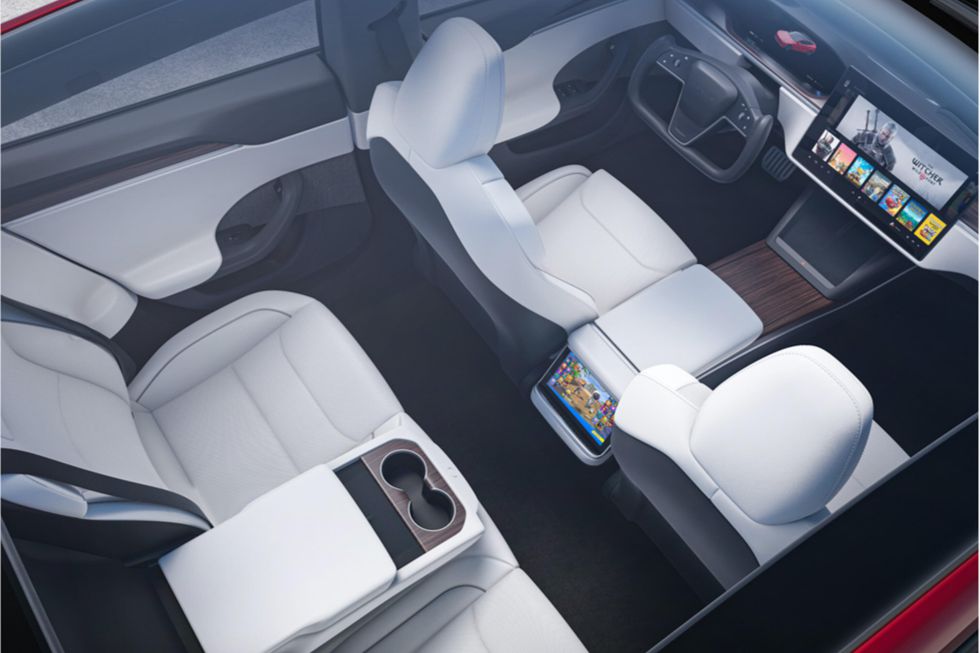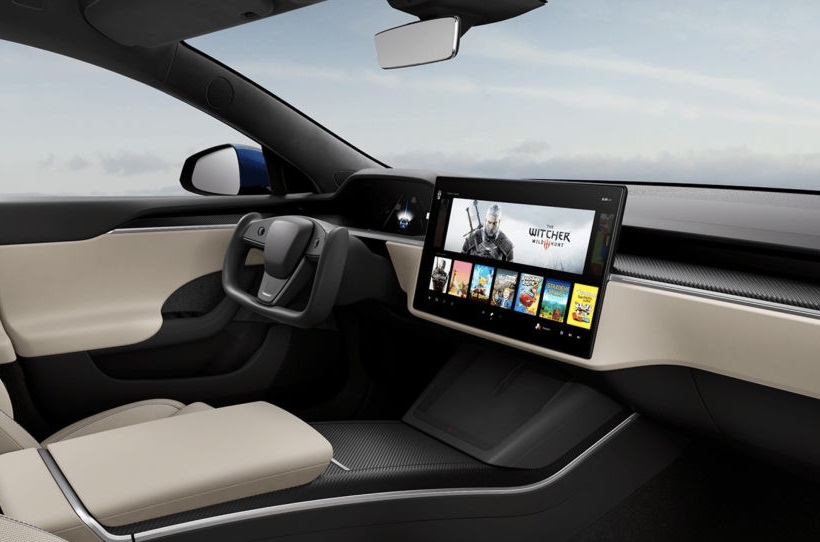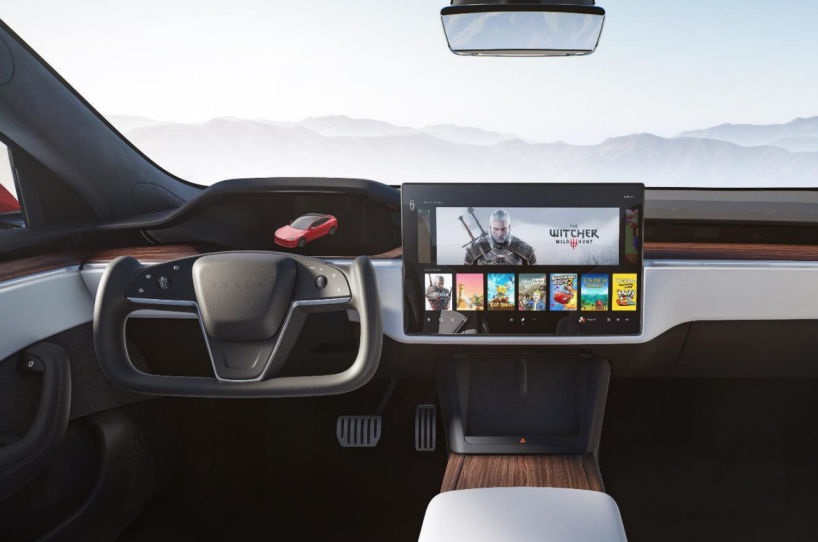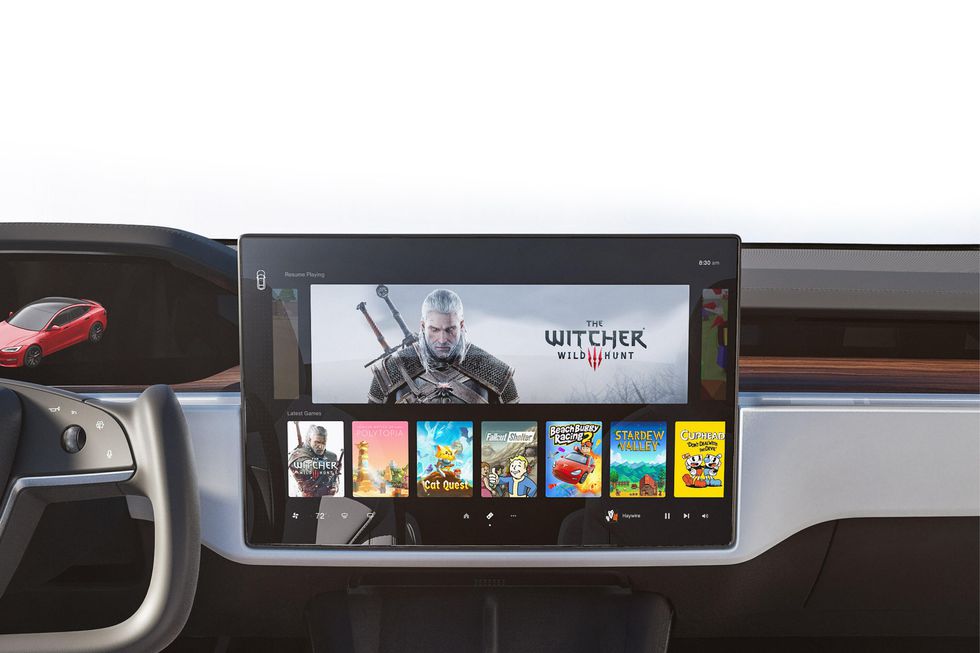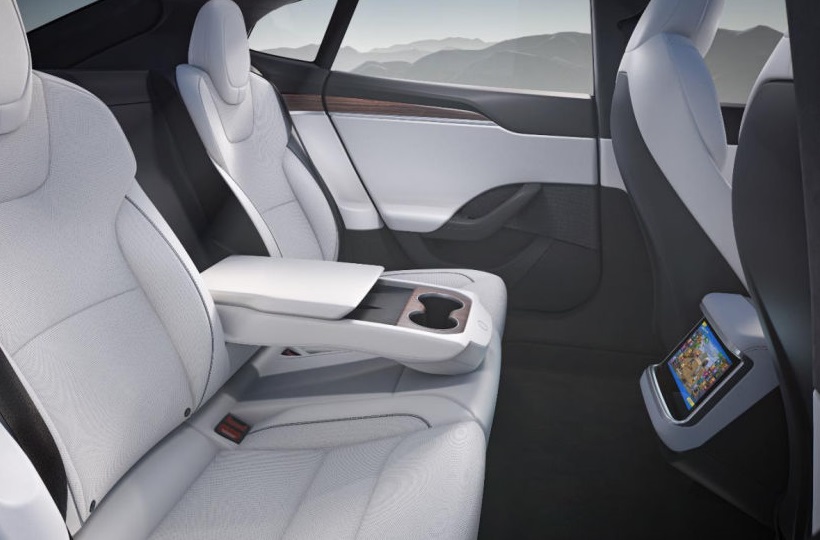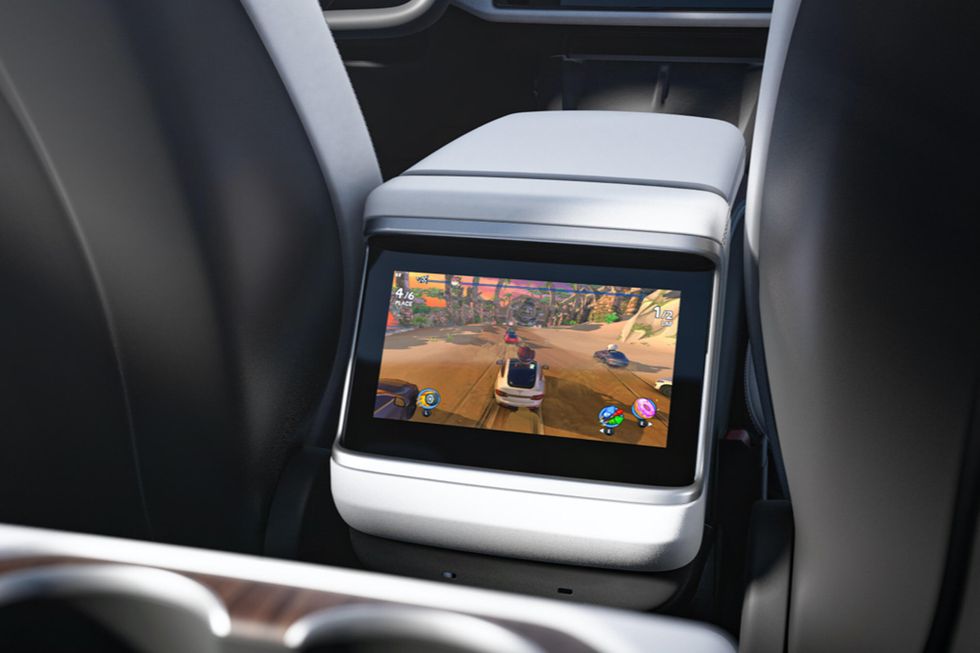Released in 2012, the Model S is the oldest member of the Tesla range. It’s about to look a lot newer than its age suggests thanks to a much-needed update that brings a fully redesigned interior and a lot more power.
Not much has changed on the outside, and the sedan remains recognizable as a Model S. Look closely and you might notice stylists gave it a nip-and-tuck that brings a redesigned front bumper, small aerodynamic tweaks out back, and new wheels. Visually, it takes a well-trained eye to tell the latest evolution of the S apart from its predecessor.
The evolutionary updates are only skin-deep; The interior is a revolution. Tesla boldly replaced the round steering wheel with a rectangular unit that reminds us of an airplane’s yoke. It looks cool, and it’s unique on the new-car market, but there might be a good reason for that. Think of how many times you put your hands on the upper part of your car’s steering wheel. Time will tell if this is the steering wheel of the future, or if it’s an annoying gimmick.
Another noteworthy change in the driver’s line of sight is that there are no stalks on the steering column. The Mercedes-Benz-sourced gear selector is finally gone, and the turn signal stalk has been replaced by buttons on the left side of the steering wheel. Switches on the opposite side let the driver honk the horn and activate the wipers.
The digital instrument cluster remains, and the driver now has an unobstructed view of it, but the tablet-like, portrait-style touchscreen that the Model S popularized is replaced by a 17-inch landscape-oriented unit similar to the one found in the Model 3 and the Model Y. It displays the latest version of Tesla’s infotainment system with a 2200×1300 resolution. Owners willing to pay for connectivity can use the screen to stream videos and play games.
Speaking of games, the back seat might be the best place to travel in. The small screen that Tesla added to the rear part of the center console packs 10 teraflops of processing power, a number the firm claims is on par with the newest gaming consoles, and it’s not wrong. Sony’s PlayStation 5 offers 10.28 teraflops of processing power, while the Xbox Series X reportedly goes up to 12. The rear-seat passengers can play a variety of games using wireless controllers.
When it went on sale, the Model S landed in a segment of one. The competition is heating up, Porsche notably entered the segment with the Taycan, and Mercedes-Benz is planning a competitor named EQS, and most of its rivals are putting a strong focus on performance. Tesla fired back by releasing the Plaid model it has talked about for years. Pegged at the top of the Model S range, it receives three electric motors that join forces to zap the four wheels with 1,020 horsepower. Tesla quotes a 1.99-second sprint from zero to 60 mph, which is shockingly quick, a top speed of 200 mph, and up to 390 miles of driving range.
Surprisingly, an even quicker model named Plaid+ is on its way with over 520 miles of range. Full details about this variant will be released closer to its on-sale date. At the bottom end of the line-up, the Long Range model carries on with 412 miles of range, a 155-mph top speed, and a zero-to-60-mph time of 3.1 seconds, which is plenty quick.
Tesla charges $79,990 for the Model S Long Range, $119,990 for the Plaid, and $139,990 for the Plaid+. Buyers are no longer eligible to claim federal incentives, but some will be able to request tax breaks at the state level.
Looking ahead, the Model X will receive the same interior and powertrain upgrades as the Model S.
